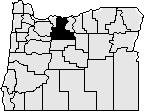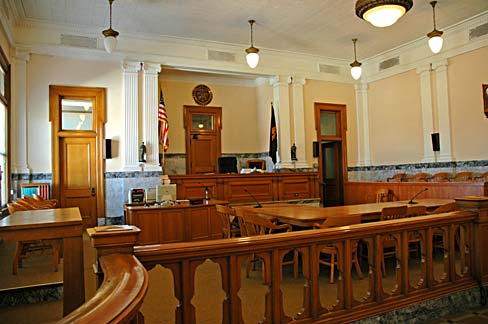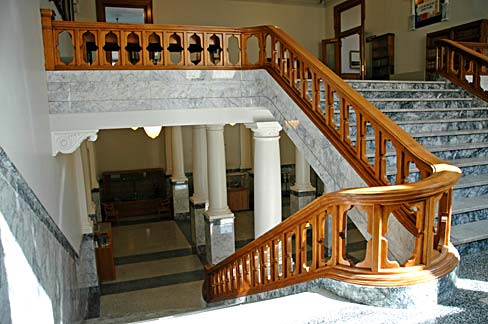
Wasco County is named for the Wasco (or Wascopam) tribe of Indians that lived south of the Columbia River, near The Dalles. When Wasco County was created from portions of Clackamas, Marion, Linn, and Lane Counties on Jan. 11, 1854, it consisted of all of Oregon Territory between the Cascade Range and the Rocky Mountains and from latitude 42deg. (the California border) to latitude 46deg. (the Washington border). This was the largest county ever formed in the United States, originally consisting of 130,000 square miles.
Portions of Wasco County as it was originally drawn now lie in Idaho, Montana, and Wyoming. Over the years, 17 other counties in eastern Oregon were created from Wasco County, which now consists of 2,387 square miles. It is bordered by two rivers, the Columbia to the north and the Deschutes to the east, and by the Warm Springs Indian Reservation on the south and Mt. Hood National Forest on the west. Wasco County shares political boundaries with Sherman, Wheeler, Jefferson, Clackamas, and Hood River Counties.
The Dalles was designated the county seat when the county was formed in 1854. Courthouses were built in 1859, 1884, and in 1914. All three buildings are standing today and the 1914 building is still in use as the county courthouse.
Elected county officials include three commissioners and a clerk, assessor, sheriff, treasurer, and surveyor. In 1969 the county court ceased to have any judicial functions and became a purely administrative body. The position of county judge was abolished in 2010 and replaced with a board chair.
The 2016 Wasco County population of 26,700 was an increase of 5.9% over 2010.
The falls on the Columbia River near The Dalles served as a gathering place and major trading center for Indians, including the Wasco, Paiute, and Warm Springs. The falls had been named
Le Grand Dalles de la Columbia (The Great Falls of the Columbia) by French Canadian fur traders. The Indians of the region were moved to the Warm Springs Reservation in 1855.
The Dalles served initially as a way station on the emigrant road to the Willamette Valley. The construction of a pioneer road over the Cascades in 1845 and the Donation Land Act of 1850 brought families to the area to settle. Wasco County became a major transportation hub for both river traffic and inland traffic. River traffic on the Columbia River was profoundly affected in 1935 by the building of Bonneville Dam in Multnomah County and by The Dalles Dam in 1957 in Wasco County. The county's economy is based on agriculture (orchards, wheat farming, livestock ranching), lumber, manufacturing, electric power, transportation and tourism.
Inside Wasco Courthouse
 The Lobby of the courthouse from the main entrance.
The Lobby of the courthouse from the main entrance.
 Courtroom view toward judge's bench.
Courtroom view toward judge's bench.
 The staircase to the top floor of the courthouse.
The staircase to the top floor of the courthouse.